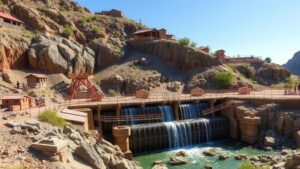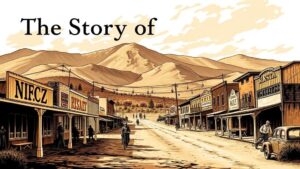How to Set Up a Medieval Smelting Workshop Following Agricola’s Designs
How to Set Up a Medieval Smelting Workshop Following Agricola’s Designs
Setting up a medieval smelting workshop based on the designs provided by Georgius Agricola in his seminal work, De re metallica, offers a fascinating glimpse into the technological practices of the time. Agricola, a scholar of mining and metallurgy in the 16th century, documented various processes and structures essential for metal extraction and processing. This article will provide a detailed guide on setting up a smelting workshop, from the necessary equipment and layout to modern interpretations of these ancient techniques.
Understanding Smelting and Its Importance
Smelting is the process of extracting metal from its ore by heating and melting. This operation was crucial in medieval times due to the demand for metals in tools, weapons, and various artifacts. Agricola described several methods of smelting, predominantly using charcoal as a fuel source, which was vital for reaching the necessary temperatures for metal extraction.
Essential Components of a Smelting Workshop
To effectively set up a medieval smelting workshop, it is critical to consider several key components:
- Smelting Furnaces: The primary structure used to heat and melt metallic ores.
- Blasting Equipment: Initially operated by bellows or later by mechanical means to increase airflow into the furnace.
- Crucibles: Containers used to hold ores and fluxes during the heating process.
- Forging Tools: Essential for subsequently shaping the purified metal.
Step-by-Step Guide to Constructing the Workshop
1. Selecting the Location
The workshop should ideally be situated close to a reliable water source and abundant raw materials, such as ore and timber for charcoal. Historical examples indicate that proximity to local resources minimized transportation costs and facilitated easier access during operations.
2. Designing the Smelting Furnace
According to Agricola, the furnace must be sturdy and well-insulated to maintain high temperatures. A typical design involves:
- A circular or rectangular base made of stone or brick.
- A chimney to allow smoke and gases to escape.
- A crucible holder that can withstand high temperatures.
An example of a successful design is the bloomery furnace, used to produce wrought iron from iron ore. This design naturally allowed air to flow through the ore, enhancing the smelting efficiency.
3. Incorporating Blasting Mechanisms
Historically, bellows were used to sustain high temperatures by increasing airflow. Modern interpretations may consider incorporating mechanical or water-driven bellows to automate this function, significantly increasing productivity.
4. Preparing the Raw Materials
Raw materials must be chosen carefully. Agricola noted the importance of high-quality ores to ensure good yield. Fluxes like limestone were also critical for removing impurities. preparation process usually involved:
- Crushing and grinding ores to increase surface area.
- Sorting ores based on quality.
- Collecting and preparing flux materials.
Operational Considerations
Once the workshop is constructed, several operational practices need to be addressed:
- Safety Protocols: Ensure all workers are trained in handling materials and operating machinery to prevent accidents.
- Environmental Impact: Employ practices that minimize pollution and waste, such as reusing by-products, which aligns with modern sustainability goals.
- Quality Control: Regularly assess metal quality through sampling and professional testing methods that can replicate ancient practices.
Modern Applications and Technological Integration
While Agricolas methods reflect the technology of the 16th century, modern adaptations can vastly enhance efficiency. Techniques such as induction heating provide alternative energy sources that reduce emissions and improve energy efficiency. For example, combining historical methods with modern technology has been embraced in artisanal iron-making workshops, demonstrating a successful balance between ancient tradition and contemporary practices.
Conclusion and Actionable Takeaways
Setting up a medieval smelting workshop based on Agricolas designs is not only a rewarding endeavor but also an educational one that connects us to our industrial roots. By incorporating historical techniques with modern advancements, it offers a unique perspective on historical metallurgical practices. To embark on this project:
- Research local regulations regarding metalwork and workshops.
- Join a community of metallurgists or historical craftsmen for guidance and support.
- Consider the environmental implications of your practice and strive for sustainability.
Embracing these steps will not only breathe life into a historical craft but may also inspire innovation in modern metalworking practices.



